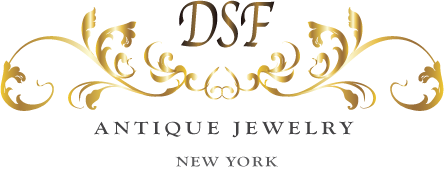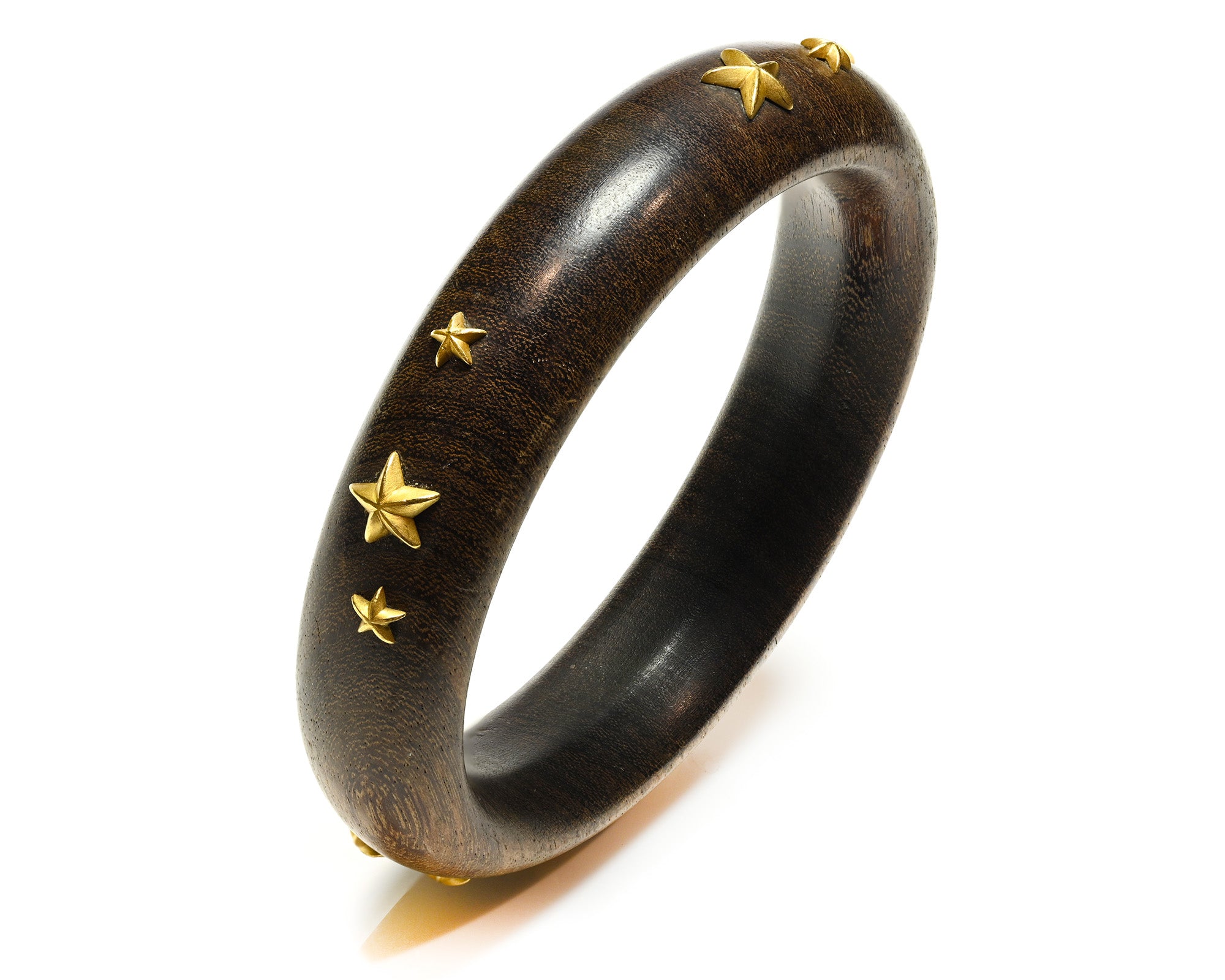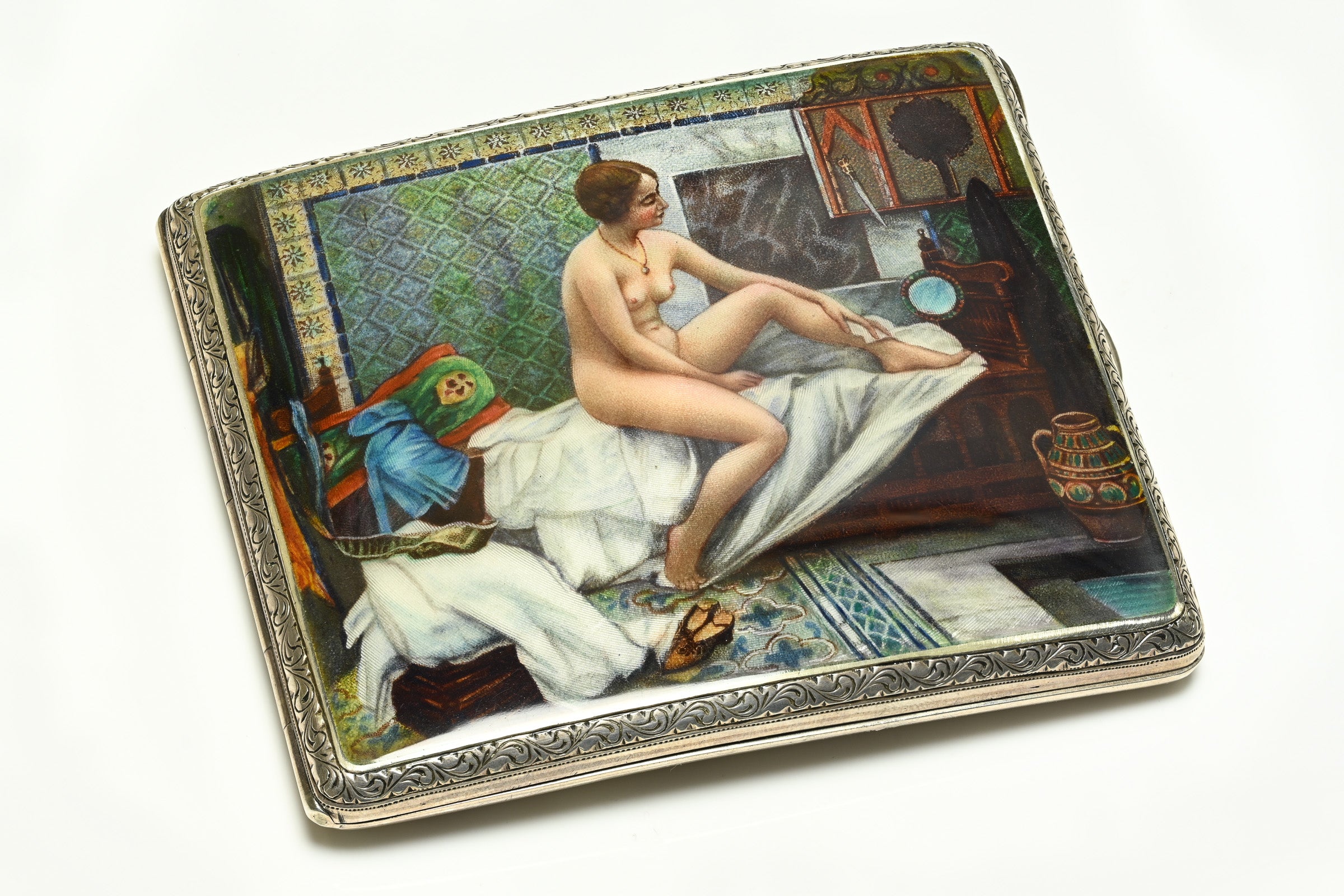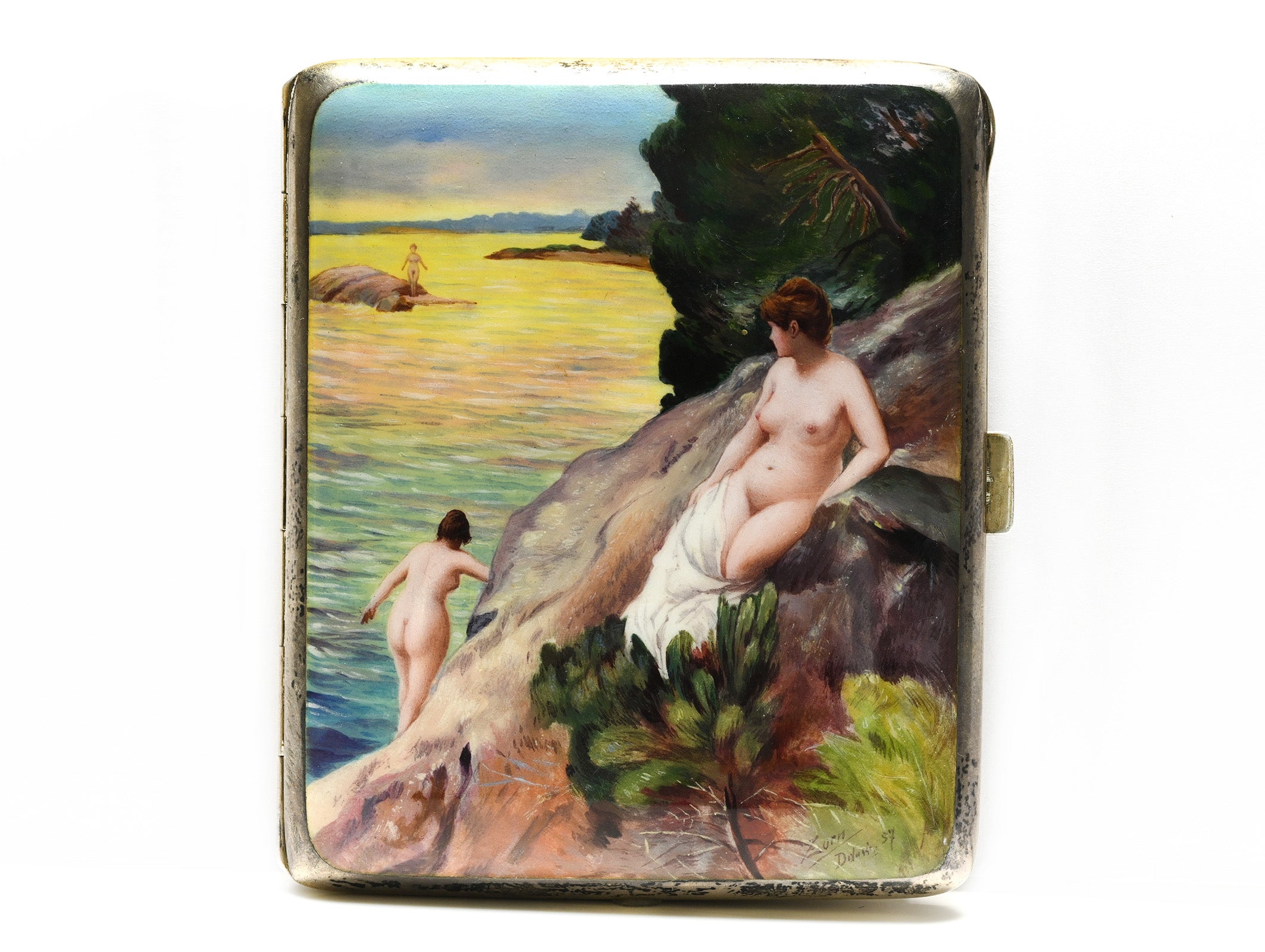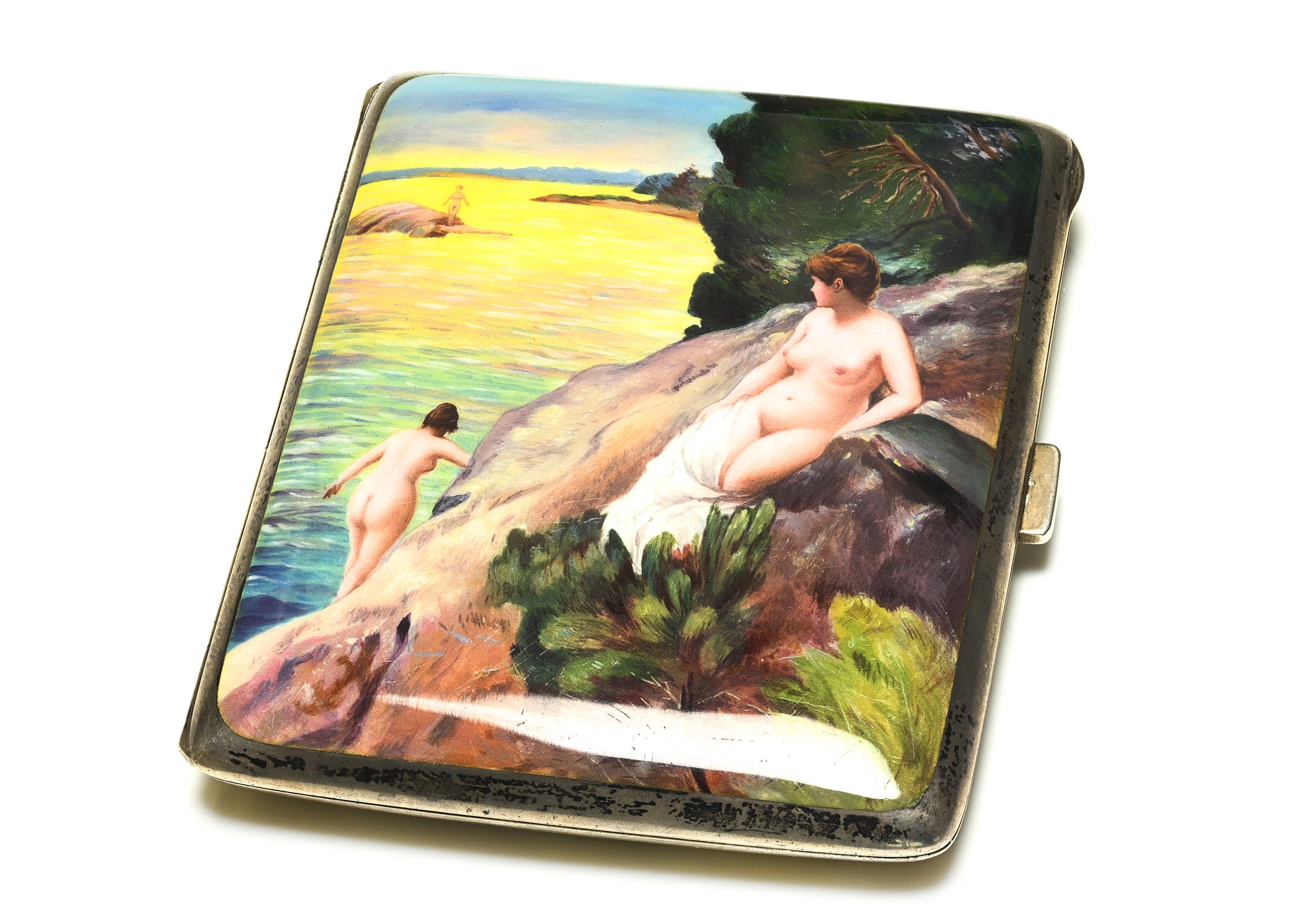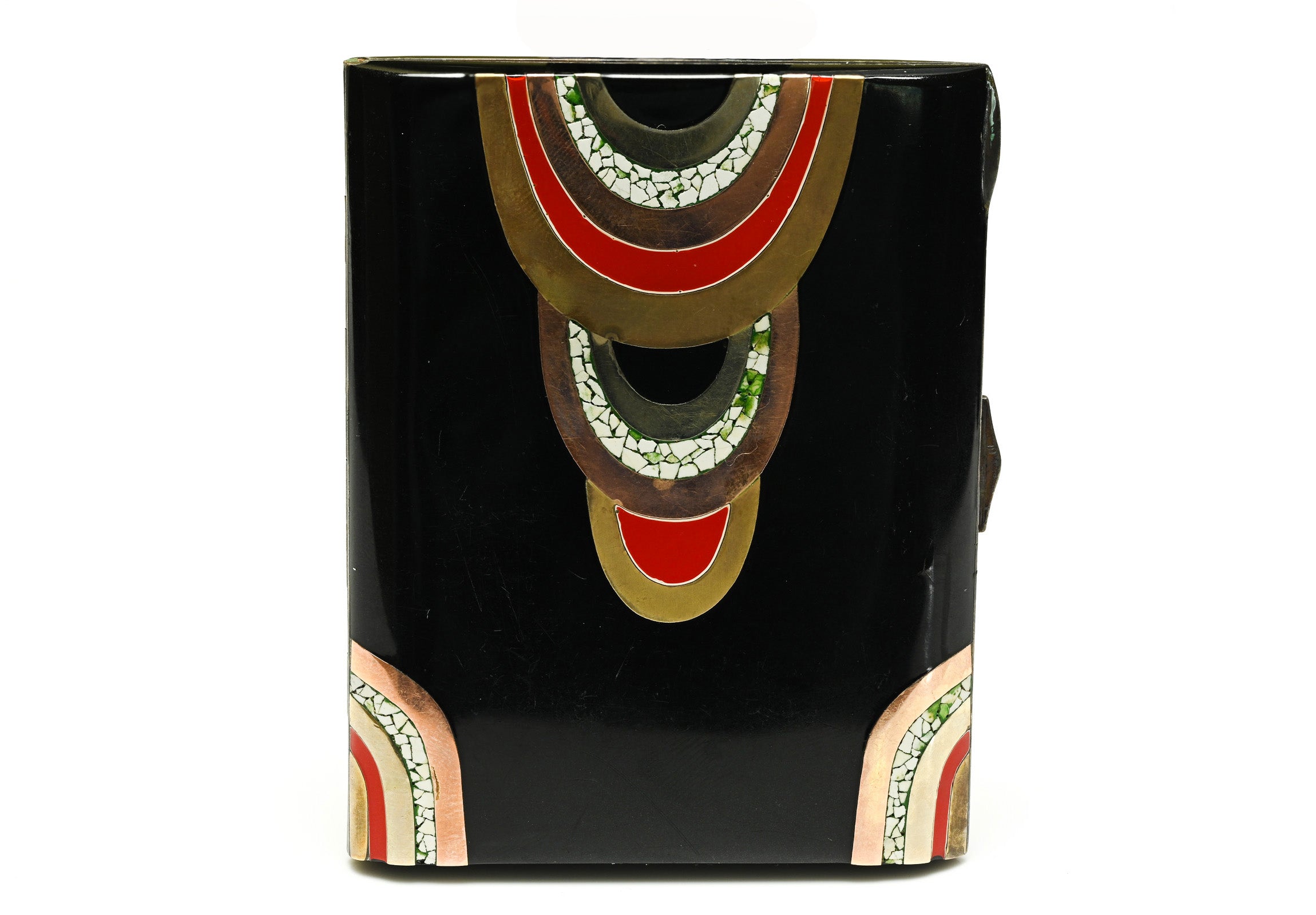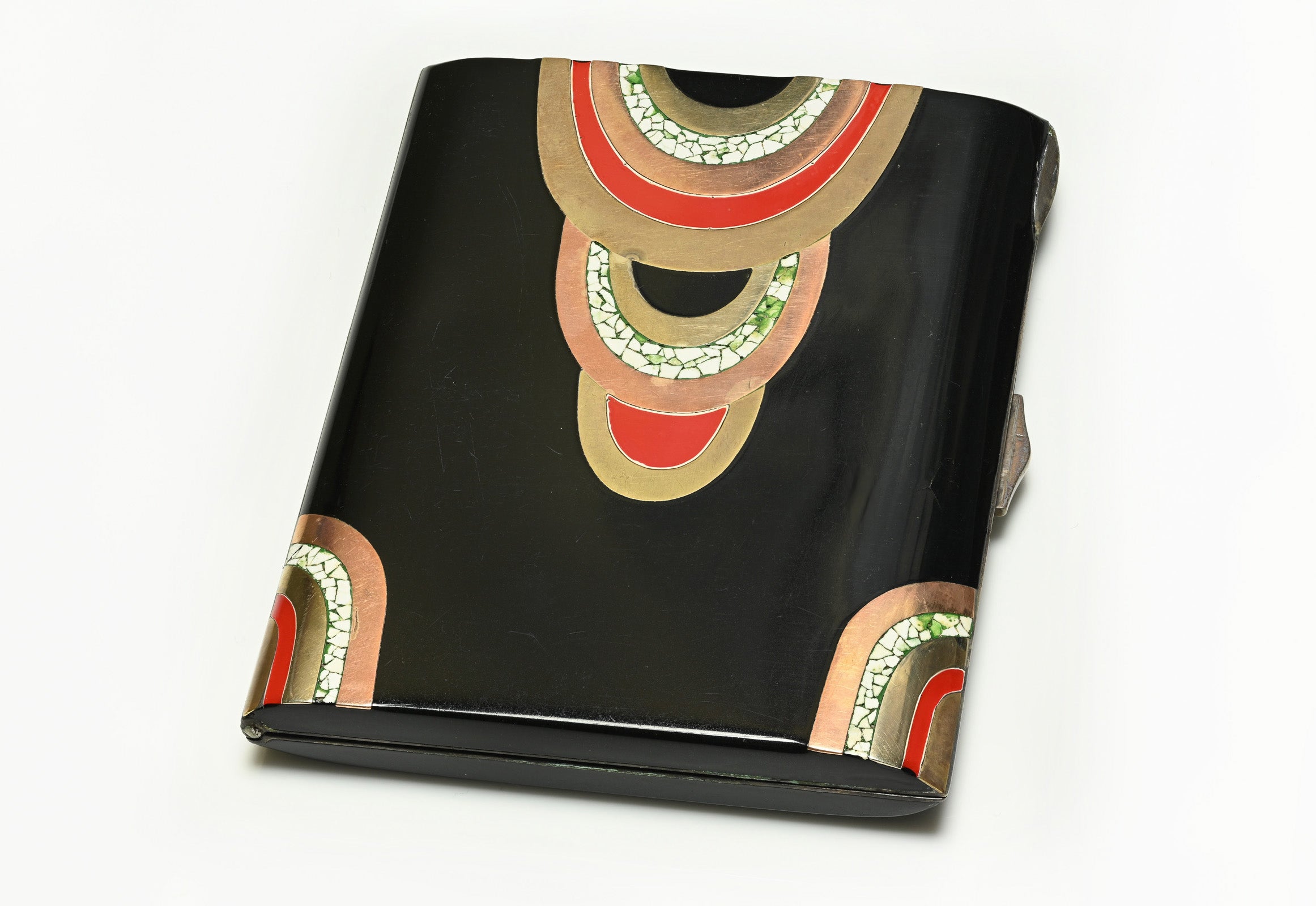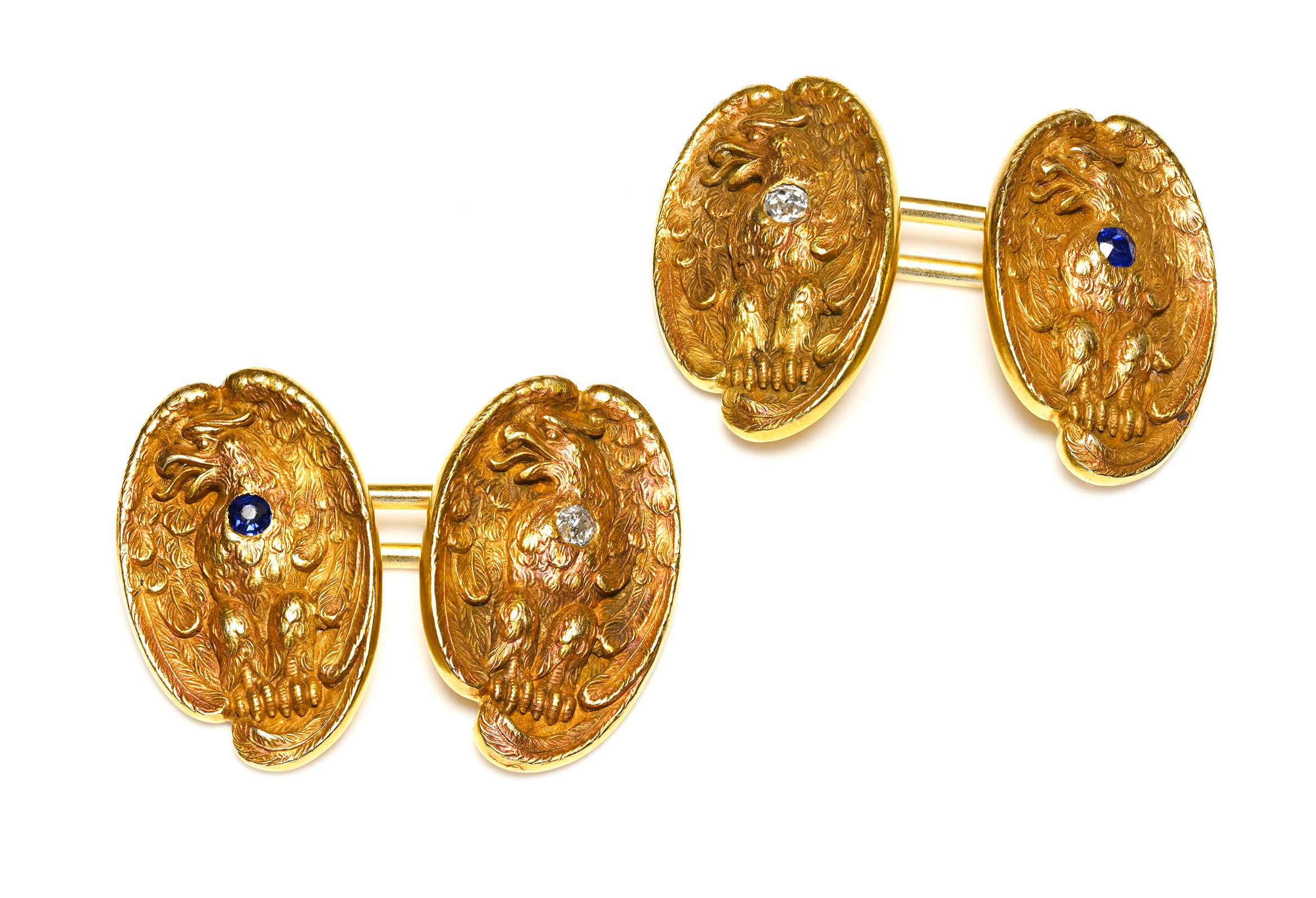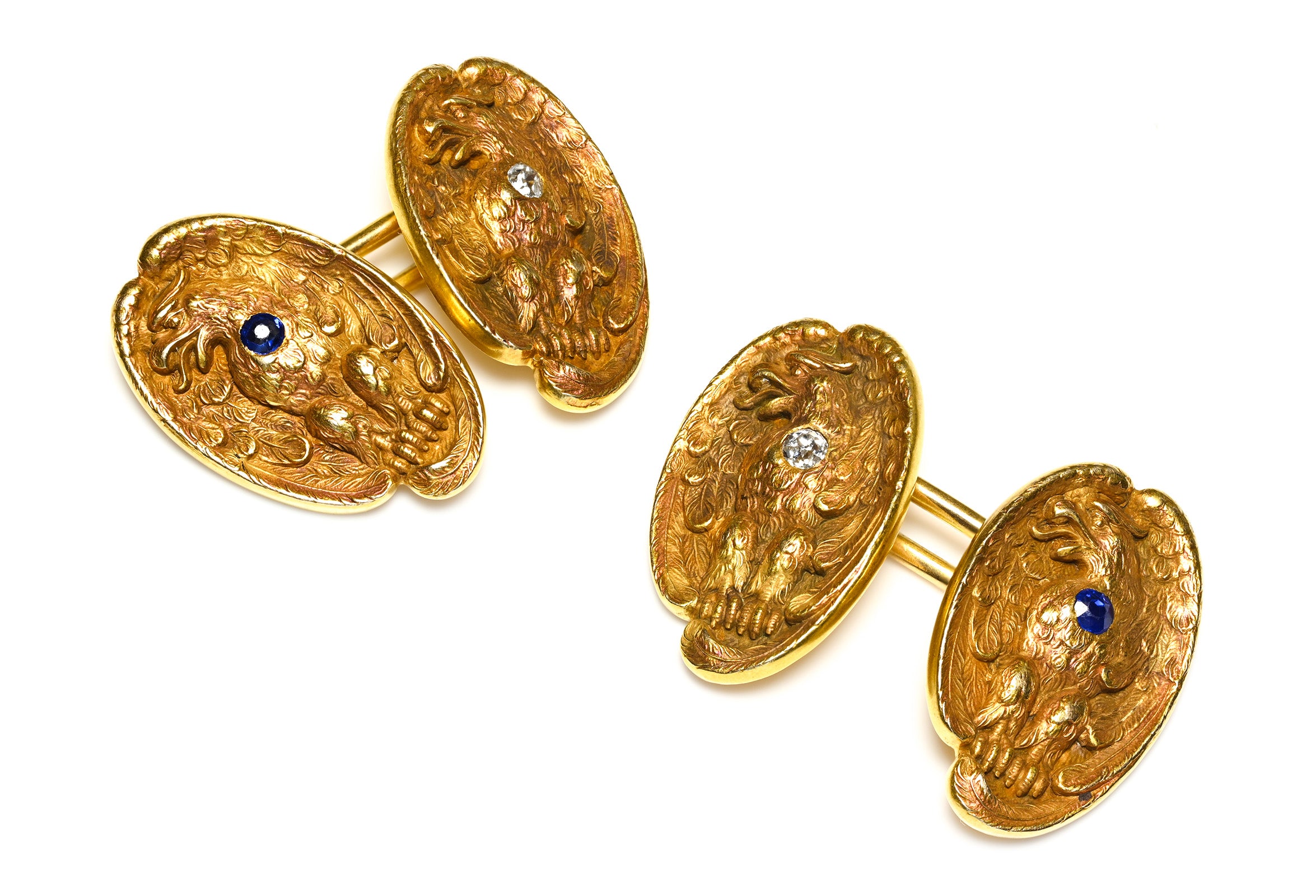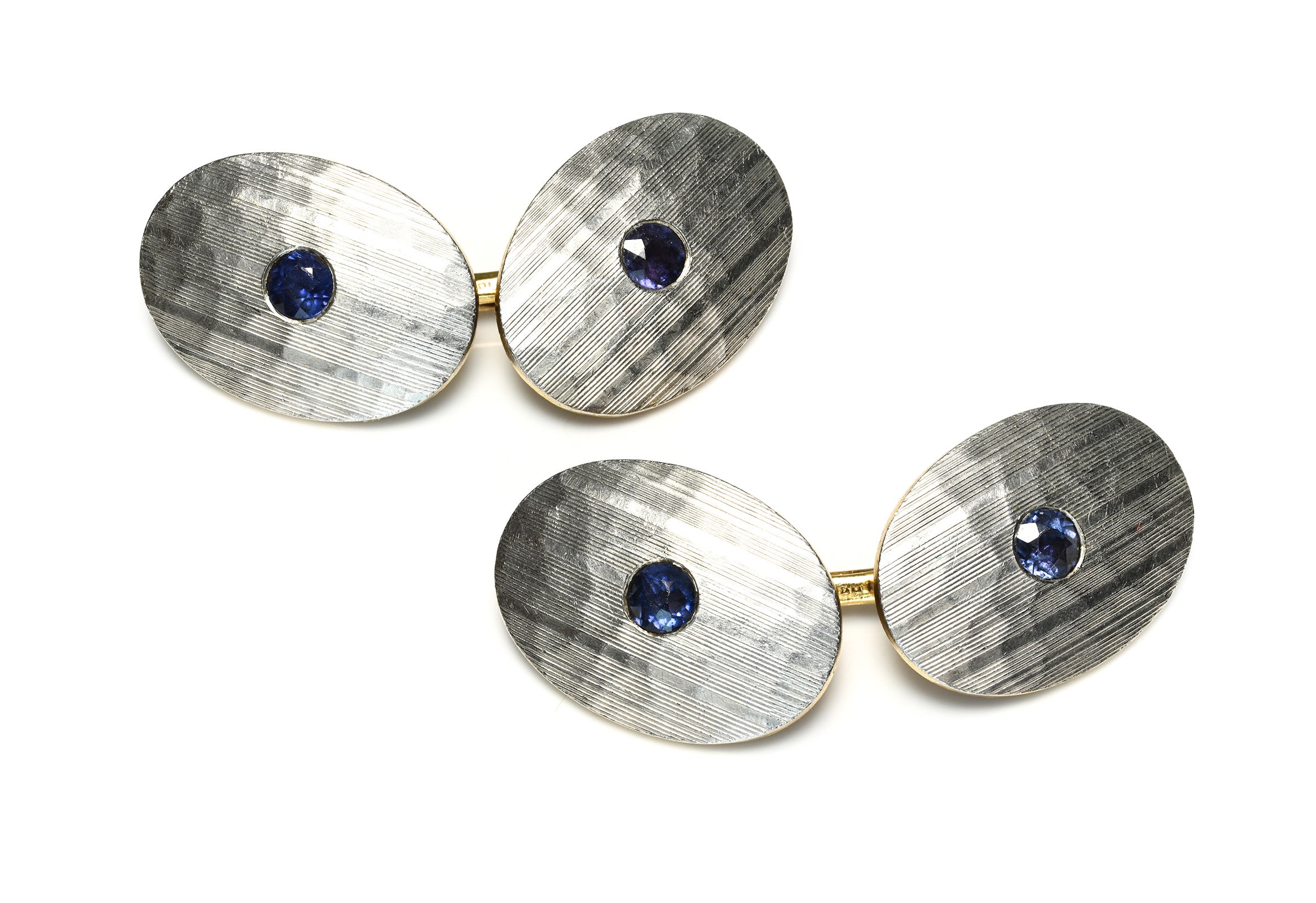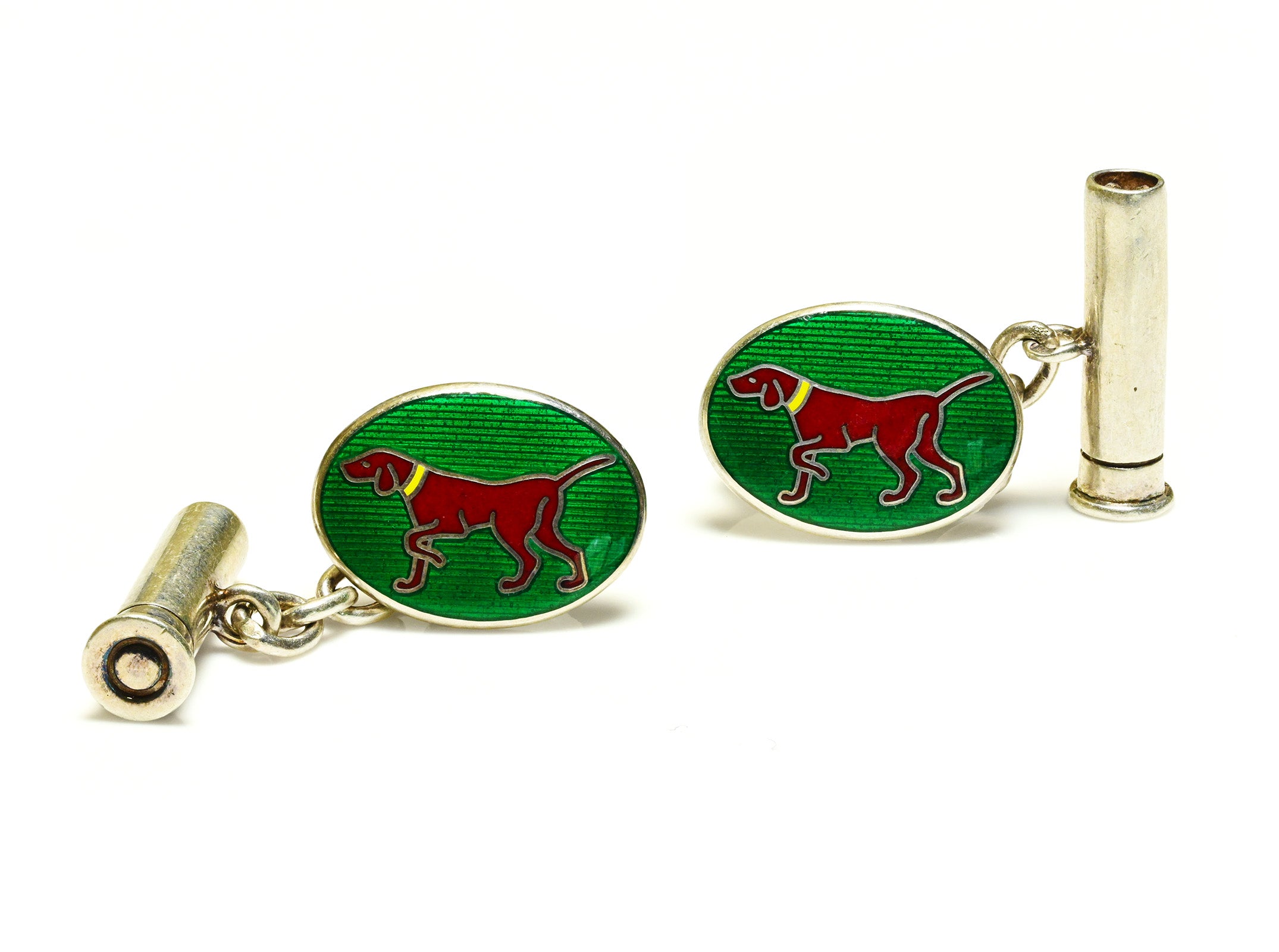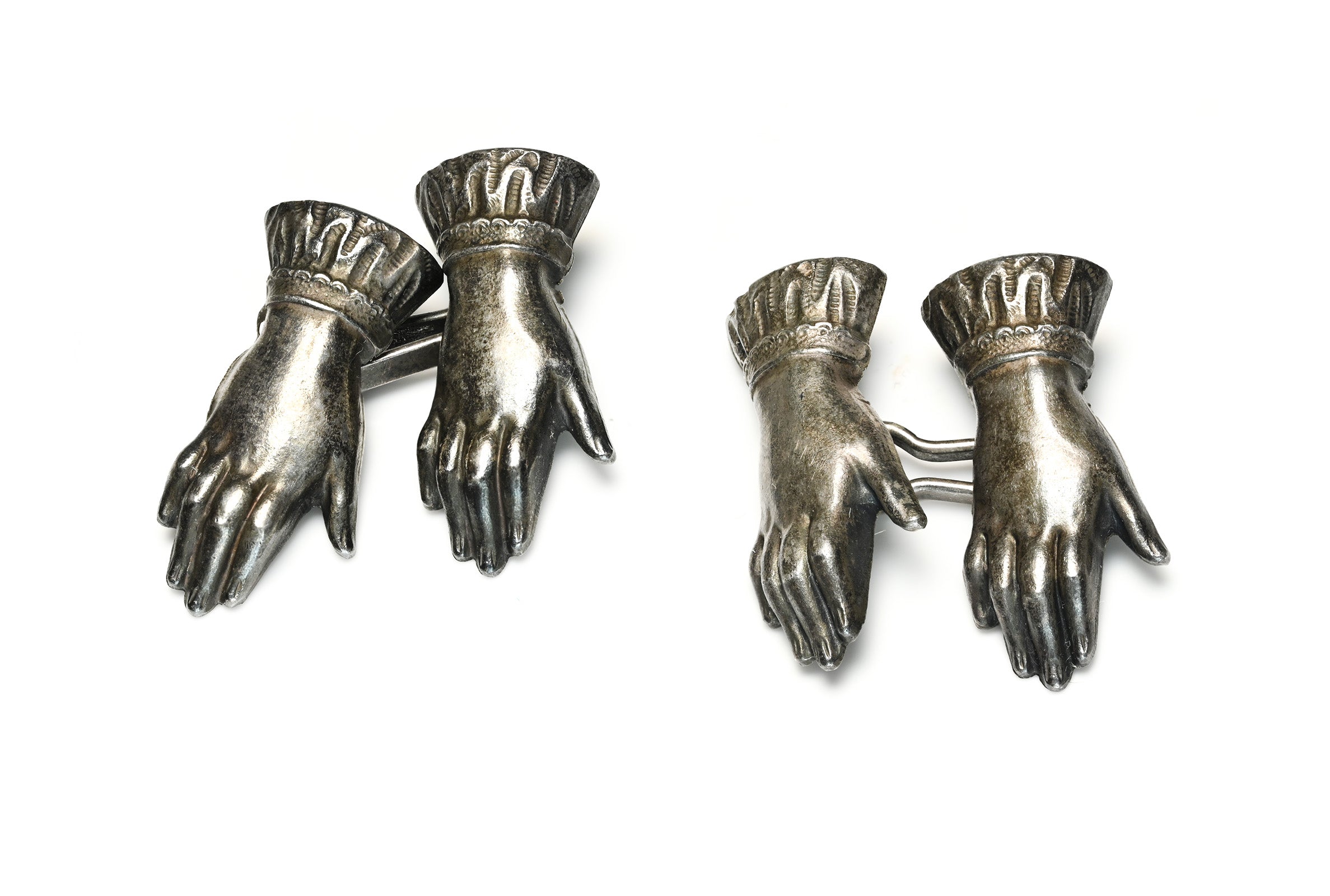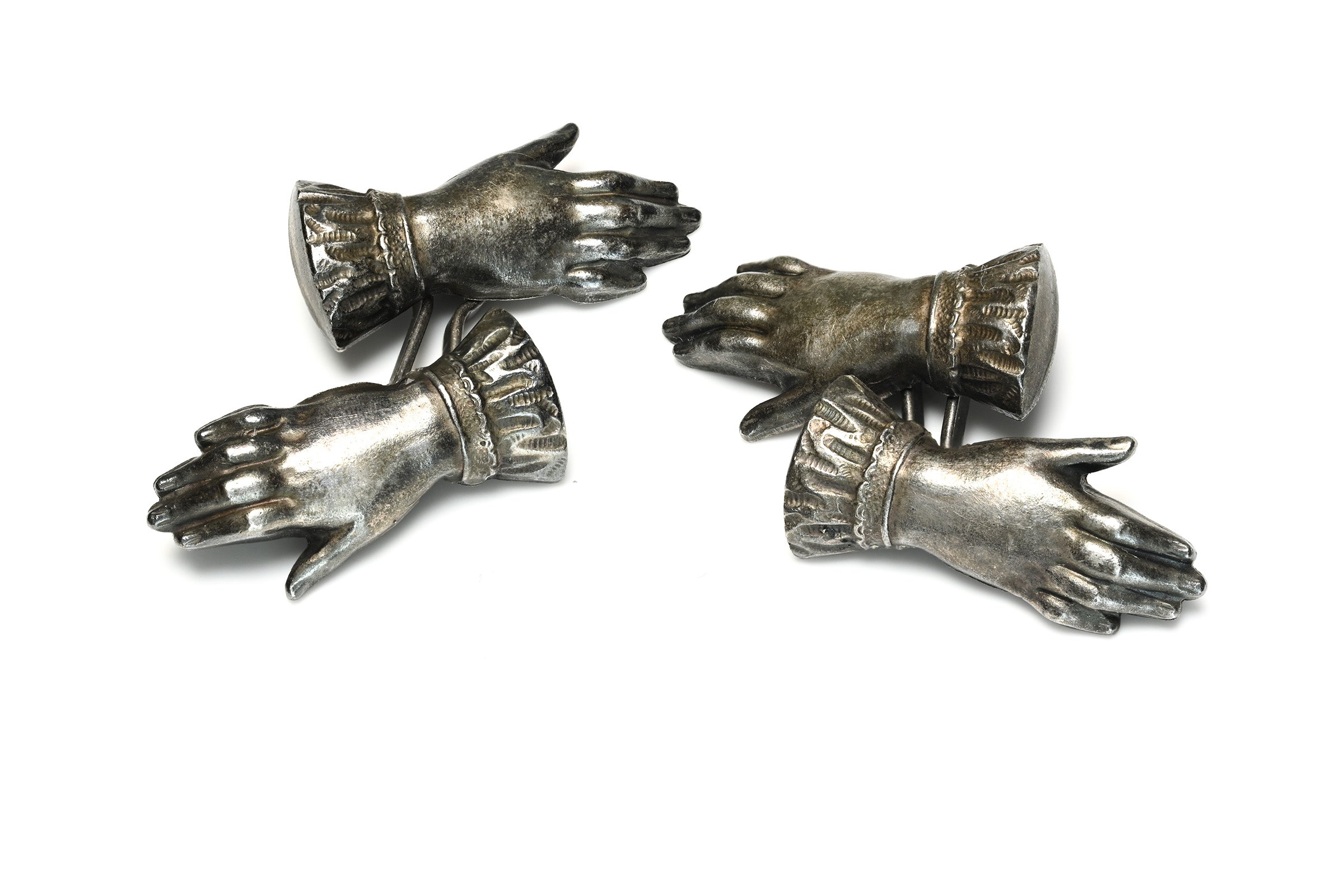Article: How to Identify Genuine Victorian Gold Rings: Hallmarks, Maker’s Marks & More
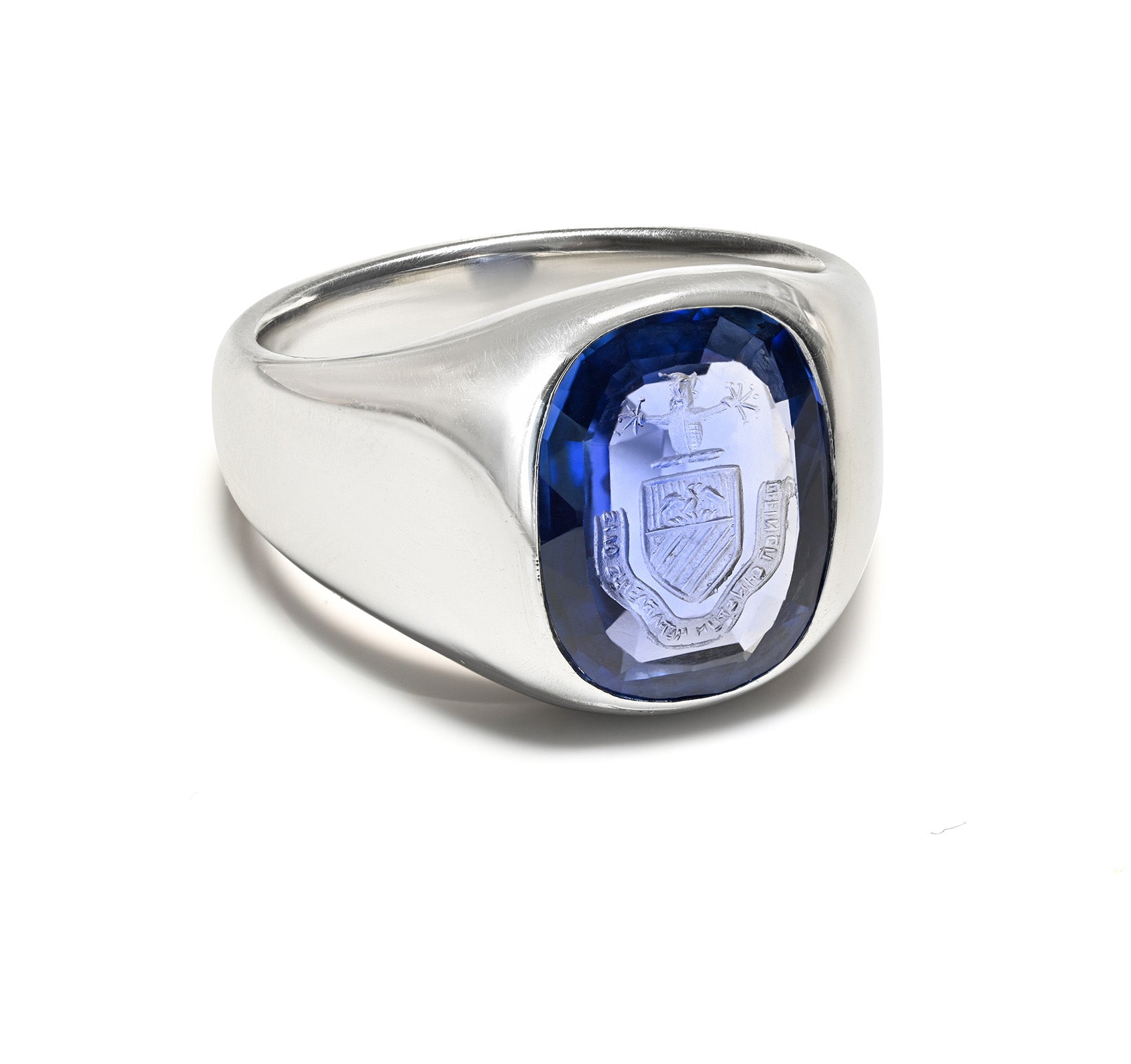
How to Identify Genuine Victorian Gold Rings: Hallmarks, Maker’s Marks & More
An In-Depth Guide by DSF Antique Jewelry
For collectors and connoisseurs of vintage jewelry, few skills are as essential as identifying authentic hallmarks and maker’s marks. These seemingly tiny engravings, often overlooked by the untrained eye, are in fact powerful clues. They unlock a ring’s history, reveal its precious metal content, and often even pinpoint the origin and maker.
At DSF Antique Jewelry, we believe that every piece we offer carries more than beauty—it carries a legacy. That’s why we’re passionate about helping our customers understand the hidden language of fine antique jewelry. This comprehensive guide is designed to help you decode the subtle signatures engraved on vintage rings, with a special emphasis on gold jewelry from the Victorian era and beyond.
What Are Hallmarks and Identification Marks?
Hallmarks are official stamps or engravings applied to precious metals, primarily to confirm their content, origin, and authenticity. These symbols serve as a guarantee of quality, certifying that a piece meets established standards for purity and production. You’ll typically find hallmarks in discreet places such as the inner band of a ring, the back of a brooch, or the clasp of a bracelet.
Identification marks go a step further. These can include a wide range of elements: a maker’s initials, a workshop’s logo, a unique serial number, or even a tiny pictorial emblem. Such marks often reveal who made the piece and can connect the jewel to a specific city, workshop, or time period.
At DSF, our in-house experts routinely use hallmark and maker’s mark research to authenticate pieces in our curated collection, ensuring every jewel we sell is genuine and historically accurate.

The Origins of Hallmarking: A Brief Historical Overview
The tradition of hallmarking has ancient roots. Civilizations such as the Greeks and Romans used early forms of metal testing and marking to verify authenticity, protect buyers, and regulate precious metals in the marketplace. As global trade expanded and metalwork grew in sophistication, the need for standardized marking became paramount.
Medieval Europe and the Rise of the Guild System
By the 13th century, organized guilds began enforcing strict regulations across Europe. These artisan communities controlled quality standards, required registration of maker’s marks, and implemented local hallmarking systems. Their efforts laid the foundation for modern hallmarking protocols.
The British Hallmarking Legacy
The United Kingdom remains a pioneer in this domain. British hallmarking can be traced back to 1300 with the establishment of the Goldsmiths’ Company Assay Office in London. Today, a hallmark on British jewelry often includes:
-
The metal fineness mark (e.g., 375, 750, or 925)
-
The assay office symbol (such as a leopard head for London or anchor for Birmingham)
-
A date letter indicating the year
-
A registered maker’s mark
For collectors of English Victorian rings, these marks offer a detailed map to trace a jewel’s origin with remarkable precision.
The American Approach
In contrast, the United States did not adopt a national hallmarking system until much later. While some jewelers voluntarily used purity stamps and maker’s marks, there was no legal requirement for consistent marking until the early 20th century. As a result, many American vintage rings rely heavily on identifying logos or stamped karat numbers, without the same systematic richness found in European marks.

Types of Hallmarks You’ll Encounter
Understanding hallmark types is essential for interpreting your jewelry’s history. Let’s explore the most common categories, using examples from pieces featured at DSF Antique Jewelry.
1. Metal Purity Marks
These marks indicate the fineness—or purity—of the metal used.
Gold Hallmarks:
-
10K (41.7% gold)
-
14K (58.5% gold)
-
18K (75% gold)
-
22K (91.6% gold)
-
24K (99.9% gold, typically too soft for rings)
-
750 (European equivalent of 18K)
-
916 (Common in India for 22K)
Silver Hallmarks:
-
800 (80% silver)
-
925 (Sterling silver: 92.5%)
-
950 (Britannia silver: 95%)
Platinum Hallmarks:
-
900, 950, or 999
At DSF, we photograph and describe all purity marks for our listed items to provide clarity and transparency to buyers.
2. Maker’s Marks
Maker’s marks are perhaps the most exciting for collectors. They represent the actual artisan, workshop, or house behind a jewel. For example, a ring stamped “T&Co.” is almost certainly the work of Tiffany & Co., while a cartouche reading “VCA” likely belongs to Van Cleef & Arpels.
These marks can:
-
Confirm authenticity
-
Increase value (especially when linked to famous makers)
-
Provide a date range based on when the mark was registered
Many of the antique rings available at DSF Antique Jewelry bear such marks, allowing us to attribute them to specific workshops in Paris, London, or New York.
3. Assay Office Marks
Assay offices test and verify the purity of metals. Each office uses its own symbol, which becomes part of the hallmark. For example:
-
Leopard head – London
-
Anchor – Birmingham
-
Castle – Edinburgh
-
Crown – Sheffield
-
Hibernia – Dublin
British assay marks are especially detailed, and they’re indispensable when identifying Victorian rings—one of DSF’s specialties.
4. Date Letters
Date letters were introduced in the UK hallmarking system to identify the year a piece was assayed. Each year is assigned a specific letter and font style, which changes in a cyclical fashion. For example:
-
A plain uppercase “C” in a rectangular punch might mean 1977 (London)
-
A lowercase “g” in a shield might mean 1804 (Birmingham)
To decode these marks, use a date letter chart from the appropriate assay office and time period. Our experts at DSF regularly interpret these to accurately date our Georgian, Victorian, and Edwardian jewelry.
5. Country-of-Origin Marks
Various countries have their own national hallmarking codes:
-
France: Eagle’s head for 18K gold
-
Italy: Star + number + province code (e.g., 228 VI)
-
Russia: Kokoshnik mark (female profile)
-
Switzerland: Helvetica head
-
Austria-Hungary: Dog head (until early 20th century)
These regional markers help identify not only where a piece was made, but also offer insights into national styles and materials.
Recognizing Hallmarks by Era: Victorian to Mid-Century
Victorian Era (1837–1901)
Victorian rings are rich in symbolism. From serpents symbolizing eternal love to acrostic gemstone messages (“DEAREST” spelled out with Diamond, Emerald, Amethyst, Ruby, Emerald, Sapphire, and Topaz), these rings are prized for their sentimentality.
Typical marks:
-
Full British hallmark set (purity, maker, date, assay office)
-
Floral engravings and chased gold
-
Regional styles (Scottish agate jewelry, mourning jewelry)
At DSF, we often spotlight pieces with intact early Victorian date letters—prized for their historical value.
Art Nouveau (1890–1910)
Art Nouveau jewelry is known for flowing lines and themes drawn from nature and fantasy. Think dragonflies, water lilies, nymphs, and whiplash curves. Pieces from France often feature the eagle’s head for 18K gold and are signed by renowned maisons like Lalique or Vever.
DSF carries a curated selection of Art Nouveau rings and brooches, often bearing rare French assay marks and exquisite enamel work.
Edwardian Era (1901–1915)
This era introduced delicate filigree work and platinum settings. Hallmarks during this period became increasingly standardized, with clear purity and maker’s marks.
Edwardian rings at DSF feature detailed millegrain edges and old mine or European cut diamonds, often in settings bearing British assay stamps.
Art Deco (1920–1935)
Bold, geometric, and symmetrical—Art Deco jewelry revolutionized design. Platinum dominated, and makers like Cartier, Van Cleef & Arpels, and Tiffany created iconic Deco pieces. Common Art Deco marks include:
-
“PLAT” for platinum
-
Serial numbers for inventory
-
Full maker’s signatures
Our Art Deco rings at DSF often feature French platinum marks and original design sketches where available.
Retro Period (1940s–1950s)
Post-war designs leaned into Hollywood glamor: bold scrolls, oversized gemstones, and rose gold were popular. The U.S. standardized karat gold marks during this period, but many European designs retained traditional symbols.
Retro pieces at DSF feature prominent American and Italian makers with visible maker’s stamps and karat marks like “14K” or “750.”
Avoiding Common Mistakes in Identifying Hallmarks
Even seasoned collectors can make errors. Here are a few pitfalls and how to sidestep them:
-
Worn Marks: Use a jeweler’s loupe (10x magnification) or digital microscope to examine faded stamps.
-
Fake Hallmarks: Beware of counterfeit items mimicking luxury hallmarks. Buy from trusted sources like DSF Antique Jewelry, where each item is professionally vetted.
-
Incomplete Mark Sets: Some regions didn’t require full hallmarking. Use style, gemstone type, and craftsmanship to fill in the gaps.
-
Misread Date Letters: A single change in font or case can mean a century apart. Always cross-check with the correct office chart.
Step-by-Step Guide: How to Identify a Vintage Gold Ring
-
Use Lighting and Magnification
Carefully examine the inside band for hallmarks. Note each one, including letters, numbers, or pictorial marks. -
Photograph or Sketch the Marks
Visual records help in comparison with hallmark guides. -
Research the Symbols
Use resources like the Bradbury’s Book of Hallmarks or country-specific online databases. -
Assess Design Features
Combine the hallmark info with design cues: setting style, gemstone cuts, and construction methods. -
Consult Experts When in Doubt
DSF Antique Jewelry offers consultations for complex identification cases—especially helpful when marks are partial or obscure.
Why Hallmark Knowledge Matters at DSF Antique Jewelry
Every ring we present has a story. And that story begins with its marks—its language of authenticity, artistry, and provenance. At DSF Antique Jewelry, we are committed to historical accuracy, integrity, and helping our customers appreciate the fine details that set a true vintage or antique jewel apart.
Whether you're investing in a Victorian serpent ring or exploring an Art Deco treasure, we invite you to discover the history behind each hallmark and celebrate the legacy it represents.
Start Your Journey With Confidence
Browse DSF’s curated collection of vintage and antique rings, each authenticated by our experts and backed by a legacy of trust.
